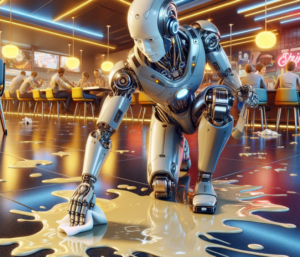In an ideal world, machine learning pipelines would build themselves, but his tedious process currently falls on the shoulders of data scientists and engineers. As noted in “The Gotchas of ML/NLP”, the key to successfully building machine learning pipelines that produce accurate downstream models resides in finding the optimal combination of technology pieces and fitting them together into a smooth end result.
Limitations to Manually Building ML Pipelines
Building machine learning pipelines is like putting together a puzzle. Only the puzzle is really five different 1,000-piece puzzles that have been mixed together. And the pieces have been scattered throughout your neighborhood, and you have to go on a scavenger hunt to find all the pieces. And you ask your neighbor, Gary, if he’s seen any pieces that might work with your puzzle because Gary seems like a puzzle type of person, so he rummages around his garage and finds one he says will work great, even though it looks to be from the 70s and there’s no way it’s what you wanted but you take it to be nice because Gary invites you over for poker nights sometimes and you don’t want to be rude—
In any case, you throw the puzzle piece away when you get home.
You’ve spent weeks—maybe months—finding all the pieces, and you’re ready to put them together. You separate them out carefully and begin piecing. Sometimes you get impatient and smash together ones that don’t really fit. And sometimes you’re missing a piece, so you pencil your best guess on some cardboard, and you hope no one notices. Occasionally, you find a new puzzle piece that fits better than your cardboard one, but when you pull the old piece out, the puzzle falls apart. Since, you know, that’s how physics works.
Manually building machine learning pipelines often works the same way—elements are pulled from different sources and shoved together, sometimes with glue coding thrown in. The final product “works”, but it’s bound to fall apart if you try to add anything or improve it. On top of that, you’ve spent the better part of a month creating this monstrosity.
You could have someone build a black-box pipeline for you, but then you don’t know what is actually happening underneath the hood and don’t get the satisfaction of seeing your puzzle—er, pipeline—come to life.
Remove the Barrier to ML
Solutions like Jaxon become invaluable resources for quickly building accurate ML models. They carefully construct the puzzle for you in a matter of days with the optimal combination of elements, all while leveraging your input as you see fit.
For example, at each stage of the process, Jaxon is automating steps that are traditionally performed by humans. With Jaxon, people can impart the best of their knowledge and intuition and then let the platform perform all the repetitive grunt work that often forms a year (or more!)-long barrier to implementing a ML project.
On top of that, Jaxon integrates the latest state-of-the-art techniques as they become available and discerns if they work for your use case (just because it’s new doesn’t mean it fits). That way, instead of hunting down the latest tech, working it into the existing pipeline, and hoping it works, you can sit back and know with confidence that you’re already leveraging the latest, greatest, and—most importantly—right solution(s) for your needs.
– Carly Stithem, Director of Marketing





